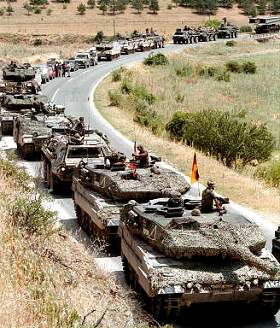 Kotor, Montenegro is that rarest of entities – a town on a Mediterranean fjord. Think of Norway or Milford Sound in New Zealand - only with added sunshine. Admittedly it's quite cloudy when I'm in the Bay of Kotor, but that is understandable for early winter. I’m staying five or six kilometres outside town in a village called Prcanj, having been talked into accepting a €15 room at a private home by a taxi driver at the unassuming Kotor bus station when I arrived this morning after a dazzling coastal 30 minute bus drive from Budva.
Kotor, Montenegro is that rarest of entities – a town on a Mediterranean fjord. Think of Norway or Milford Sound in New Zealand - only with added sunshine. Admittedly it's quite cloudy when I'm in the Bay of Kotor, but that is understandable for early winter. I’m staying five or six kilometres outside town in a village called Prcanj, having been talked into accepting a €15 room at a private home by a taxi driver at the unassuming Kotor bus station when I arrived this morning after a dazzling coastal 30 minute bus drive from Budva.But the driver (who owns the house) was happy to take me back to the station tomorrow morning and I was happy to walk the distance today sans bags. He offered me some local firewater at his house which I turned down, preferring to stay sober in Kotor at 8am. He also offered me a lift back into town which I also refused. It was a lovely walk along the narrow road beside the fjord. At the station he told me it was “just 2 kilometres” but a road sign tells me Kotor’s “stari grad” (old town) is “8kms” away. Neither my landlord nor the Kotor council are right, it’s closer to 5km and it takes me just under an hour to make the trip around the bay.
Kotor is possibly the most stunning place I’ve stayed in two months of travel. I climbed the city walls 500m above the town to San Giovanni fortress. There has been a fortification on this site since the Byzantine emperor Justinian sent the Goths packing in 535AD. No visable Goths or Visigoths today or indeed any other sign of humanity. I was supposed to have paid €2 entry fee but there is no-one here to collect it. I have the entire mountain to myself.
At the top, I stare out towards the exit of the fjord though I cannot see the Adriatic from here hidden behind the tall mountains on either side of the fjord. The Montenegrin flag flies proudly from the top of the fortress. The water looks perfectly still and hardly a sound from the old city penetrates this far up. The flag has stopped fluttering as the wind has died down and all I can hear is the barking of distant dogs.
I climb back down to the old town which is beautifully preserved and full of young people. The town is proud of its nightlife and the city has a carnival atmosphere in summer. It is a lot quieter in November, but there are occasional echoes of Kotor notoriety. Everything happens under the watchful eye of Mount Lovcen.
Kotor’s heyday was the Middle Ages when it served as an important artistic and commercial centre. Called Cattaro, it was an independent republic from 1395 to 1420. From 1420 to 1797 Cattaro fell into the hands of Venice. The Venetian influence is evident in the architecture. By the treaty of Campo Formio in 1797 it was acquired by Austria. Then at the end of World War I, Kotor became part of Yugoslavia, where it remained (apart from brief Italian hegemony during WWII) until the country’s breakup in 1992.
 Many of Kotor’s monuments including the fortress were badly damaged by the devastating 1979 earthquake, which measured eight on the Richter scale. Kotor’s old town was restored with UNESCO help. But Montenegro is no longer impoverished and the country is making rapid strides towards western European standards, evident in Kotor’s more expensive shops.
Many of Kotor’s monuments including the fortress were badly damaged by the devastating 1979 earthquake, which measured eight on the Richter scale. Kotor’s old town was restored with UNESCO help. But Montenegro is no longer impoverished and the country is making rapid strides towards western European standards, evident in Kotor’s more expensive shops. Things are still cheap enough here generally though as more people discover this magnificent unspoilt coastline (and proceed to spoil it) that will change. Already the Hotel Splendido down the road charges €160 a night according to mine host, a local whose house has splendido fjord views of its own. Viva Cattora!






